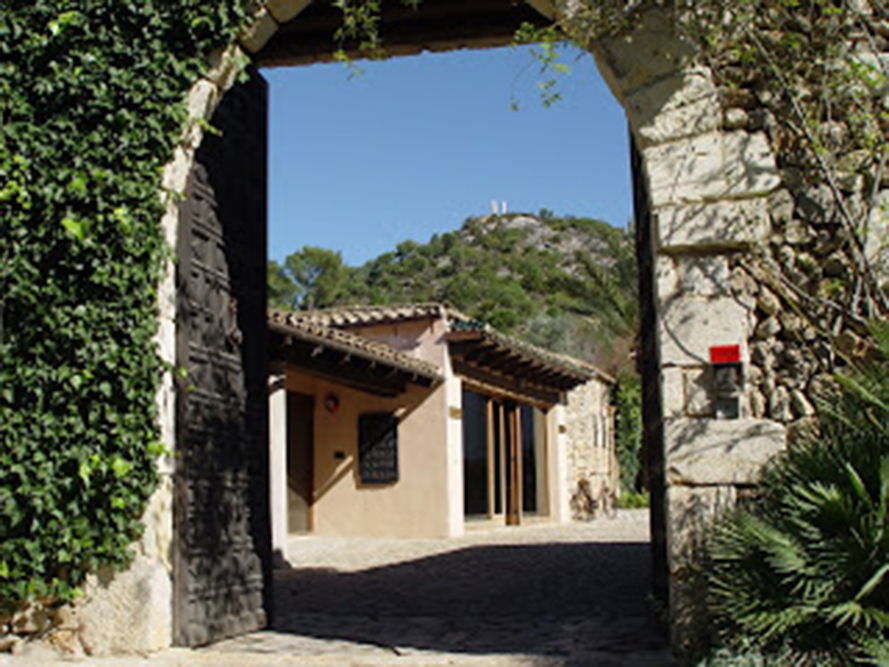There are plenty of hidden gems in Mallorca that reward the explorer. One of them that had long tantalised me is the Yannick and Ben Jakober Foundation at Sa Bassa Blanca, just outside Puerto de Alcudia, on the eastern coast.
En route to Sa Bassa Blanca, Mallorca (Rundle Cook photographer)
Nestled on long slopes sweeping down to sapphire waters, the buildings and gardens that form the exhibition spaces are an interesting mixture of foreign exoticism and Mallorcan architecture. The house and partial exhibition spaces were built by Egyptian architect, Hassan Fathy, with white crenellated walls and an interior courtyard that harks back to the Alhambra. Latticed windows and elements from Morrocco, Turkey and Andalucia all mingle to form an abode of great character, the backdrop to a collection of art and sculpture that underline Yannick and Ben Jakober's status of artist-citizens of the world. Outside, oversized sculptures executed in Asia via Internet supervision by Yannick and Ben Jakober are scattered through the landscaped gardens.
View at the Fundación Yannick y Ben Jakober, (Rundle Cook photographer)
The core collection that attracts visitors down the four kilometer country lane to the Foundation is hidden elsewhere. Deep underground in a wonderfully converted Mallorcan "aljibe" or cistern is housed the "Nins" collection of children's portraits dating from the 16th to 19th century.
The collection began when Yannick purchased a 19th century Mallorcan work by Joan Mestre, "Portrait of a Girl with Cherries" in 1972.
Joan Mestre i Bosch (Escuela mallorquina), Retrato de una niña con cerezas, c. 1843, oil on canvas, Fundación Yannick y Ben Jakober, Mallorca
The collection has slowly grown to over a hundred works, mainly of the 16th and 17th century, mostly of children of important historical figures. There are portraits from most European centres, from England to Italy. About a third of the collection is on exhibit at any one time in the spacious "aljibe" galleries.
As you walk into the galleries, it is an introduction to aspects of art that are seldom underlined. Not only are there lovely portraits, of all sizes and styles, many by well-known artists, but you learn how children were cared for, clothed and regarded down the ages. Swaddled children are depicted, several times. Little "adults" bedecked with elaborate accoutrements telling of their social status stare out seriously at the viewer. Later, there were more informal portraits, when children were allowed to be a little more their real age. Fashions changed, jewels evolved. Dogs come and go as companions, while birds often act as symbols. Landscapes began to be introduced as backdrops to the portraits, rather than elaborately curtained interiors. Some close-cropped head studies, particularly from the Netherlands and Spain, are poignant in their directness. Others hint at illness and a complicated destiny. Willy nilly, as you walk around the galleries, you find yourself caught up in the dramas and rarified atmospheres of these little children whose positions were often of such privilege that we know today of their existence in exquisite detail. It is a unique experience to view this "Nins" collection.
Not only are there all these interesting aspects of art to savour, but in May, there is also a rose garden full of heritage roses of great beauty to enjoy. Planted by Yannick Jakober, it is a perfect complement to everything else to visit at Sa Bassa Blanca.
The photographs above were taken by my photographer husband, along the road to the Foundation, and at the entrance to Sa Bassa Blanca. Thank you, Rundle.


